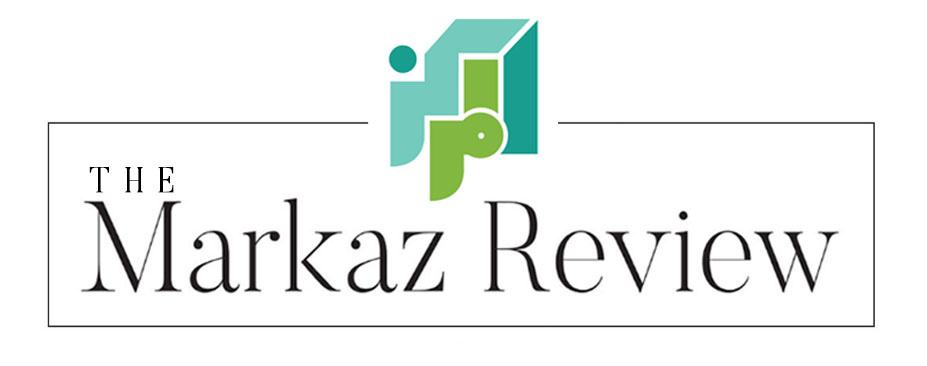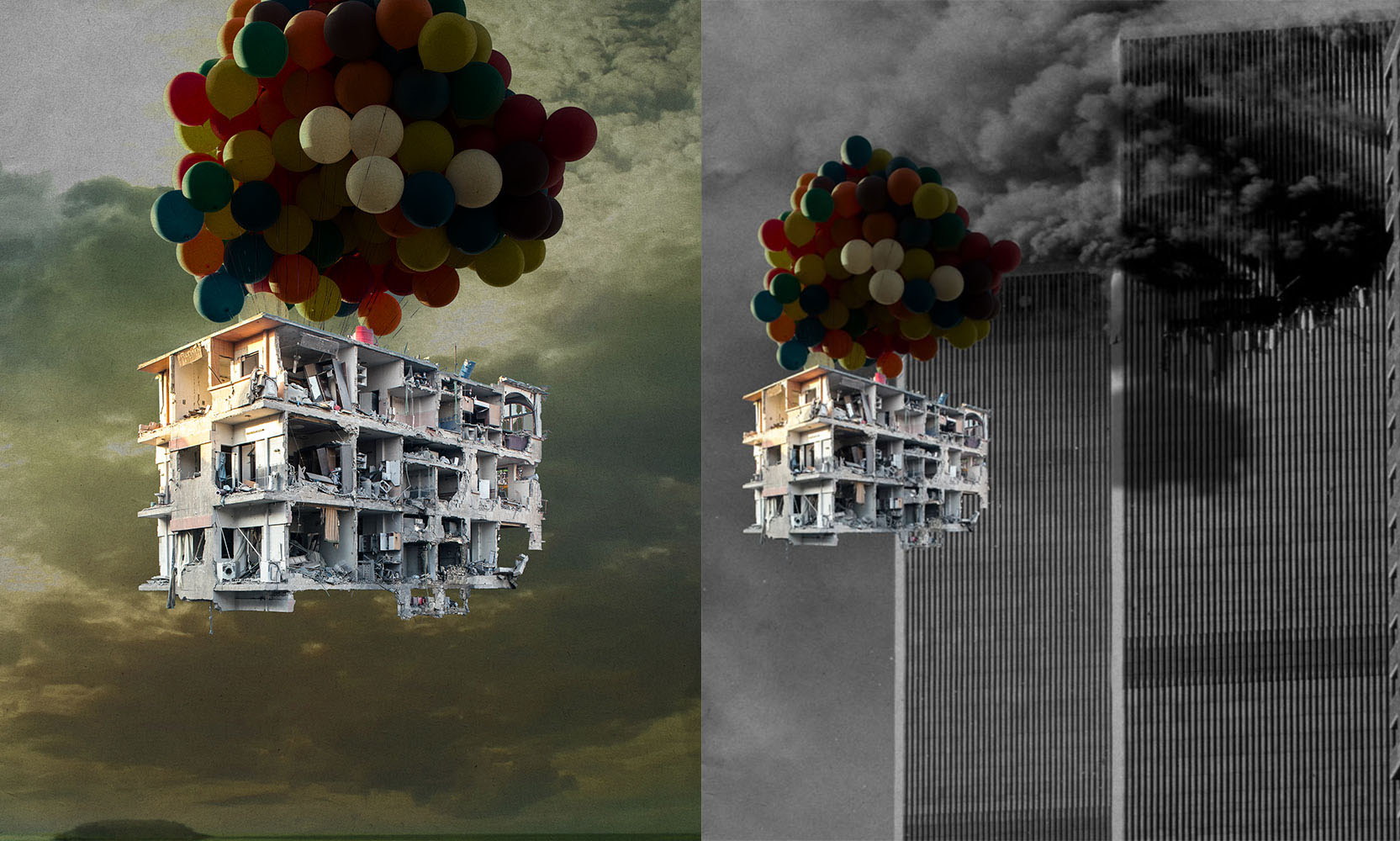In guise of an editorial, our literary editor presents this summer double literary issue.
Malu Halasa
During our online editorial meeting Lina Mounzer, our senior editor in Beirut, asked if we could hear the Israeli drones buzzing in the skies above her. There was a delay and then there they were: chainsaw buzzing, the watching, the surveillance, the never-ending preparations to attack countries across borders, in Lebanon, Syria, and now Iran, in addition to the ongoing war on Gaza and the rise of incredible violence in the West Bank.
The theme of this double issue, Freedom to Read, has been interpreted by writers in a myriad of ways. Freedom against book censorship, freedom to express oneself, freedom to exist and imagine a different kind of future for oneself in the Middle East, all hold particular resonance. With war and conflict increasingly engulfing the region, writers need to be heard more than ever as regimes around the Middle East and beyond arrest people — even for tweets — as a cover for national security to clamp down on dissent.
In her review of Bothayna Al-Essa’s novel The Book Censor’s Library, our managing editor, Rana Asfour at her desk in Amman, writes about the rise of the global phenomenon of censoring books. Just last week new laws enabled conservative American parents to stop LGBQTI+ novels in public libraries. In Kuwait where author and bookseller Al-Essa lives, 4,000 books have been censored since 2014. Al-Essa had been part of a campaign to convince lawmakers to revise the country’s print and publication laws, which they were in 2020. Her 13th novel, The Book Censor’s Library, takes place inside the mind of an unnamed censor, conveying the effect of reading about new ideas that challenge authoritarian control.
Rana has her own reading initiative, BookFabulous. She also hosts The Markaz Review’s monthly book club.
There are thousands of book clubs all over the world. The next time you gather with friends online or in person over a specific title, you might also consider the book club run by the psychologist and writer Marie Bamyani. It brings Afghan women in Kabul and in the diaspora together over a novel they are reading together. In her essay “In Reading, We Resist,” translated from Dari by Zubair Popalzai, Bamyani discusses the power of this much relied-on joint activity for women in a country where, as she notes, “At the end of last year, the Taliban issued a decree banning the reading, publication, and sale of 400 book titles in Afghanistan.”
A more extensive overview of both the overt and hidden processes that determine which books are available in the SWANA region and beyond comes from literary agent Yasmina Jraissaiti, who represents the Syrian writers, Samar Yazbek and Khaled Khalifa (1948–2024), among many others on her stellar list. The essay “Are We As Free To Read Books As We Think?“ also discusses the use of algorithmic recommendations from search engines, which has the effect of narrowing readers’ tastes rather than widening them. Really, was this the promise of the information revolution?
For two contributors new to The Markaz Review, freedom to read means understanding landscapes around them. Architect and designer Meriam Othman lived in Baghdad, and on her way to work outside the Green Zone, she kept seeing Saddam Hussein’s white elephant — the Al-Rahman Mosque was supposed to be the largest mosque in the Middle East. While construction began, wars disrupted its completion. To Othman, it has become a symbol of Iraq’s fragility as described in her essay “Architecture and Political Memory.”
For the Saudi British geologist Manar Alsaif in “Reading between the Lines of Land,” a journey of recognizing the significance of rock formations in Britain and Norway enabled her to better “see” her homeland. Through geology, her personal ties to Saudi Arabia have been solidified.
Landscape and monuments are all the more revealing when they are no longer there. The human rights lawyer and author Raja Shehadeh and the Birzeit academic and writer Penny Johnson include forcibly removed or erased landmarks in their most recent book, Forgotten: Searching for Palestine’s Hidden Places and Lost Memorials, reviewed in the issue by Gabriel Polley, who visited Palestinian shrines for TMR. Shehadeh and Johnson’s undertaking is part of a greater trend in Palestinian accounts to archive not only landmarks but sadly the destruction of a way of life that is taking place in Gaza. The vital importance of archives at this time of genocide and erasure is the starting point of Francesca Vawdrey’s considered review of four diaries by Gazan women that were published in Voices of Resistance: Diaries of Genocide.
More of a memorial than an archive is Taqwa Ahmed Al-Wawi’s essay, “A Voice That Defied Silence,” on the inspirational legacy of Refaat Al-Areer, the poet and professor of English literature at the Islamic University of Gaza, who was killed during an Israeli airstrike on December 6, 2023. His advice about writing wasn’t for his students alone. Language, he maintained, “is not neutral, and words can either expose crime or cover it up.” More specifically he said to avoid the use of the passive tense, as Al-Wawi writes: “How many times have I read headlines saying ‘A young man was killed in an airstrike,’ without mentioning who killed him? The occupation should never remain unknown. The occupation is the perpetrator, the killer, the one who turned Gaza into rubble, and the one who assassinated Refaat Al-Areer himself.”
For this issue, poetry critic Eman Quotah reviews the work of the Gazan poet Nasser Rabah and his new book Gaza: The Poem Said Its Piece, which includes translations by TMR’s contributing editor Ammiel Alcalay. In a separate interview with the translator Alex Tan for Protean magazine, Rabah describes not just his poetry but much of Palestinian creative expression produced today:
In a time of war, what I write is not poetry — rather, I merely describe what I see and feel without need for significant literary intervention. What has taken place so far defies the imagination and surpasses metaphor; it is, in and of itself, poetry that aches … Writing represents an act of resistance: it militates against all that is base and hateful, against death and annihilation. If writing is life, and life itself has turned into war, what more is left for us to write?
Also in this issue, in Poetry Markaz, Nasser Rabah speaks directly to the read in a video recorded for TMR, in which he discusses his new collected poems in English and presents two from his book published by City Lights.
Unique voices from Palestine come to The Markaz Review from a variety of sources. Important, inspirational connections have been made through Jonathan Chadwick, the director of London’s Az Theatre. He introduced Hossam Madhoun to our pages. Recently Jonathan put me in touch with Thoth, a writer who finds it necessary to write under a pseudonym because of where that writer works on the West Bank. Thoth provides a uniquely intimate portrayal of hard days under Israeli occupation in the life of the city of Tulkarm. They reveal the effects on old and young alike, from their hopes and desires to their unconscious reactions and real-life strategies that enable them to live under the at times shocking, unremitting violence. In one passage in “Unwritten Stories from Palestine” the writer shepherds their terrified mother from a surprise Israeli attack on a market. I couldn’t help but think of my own mother, who had long passed away. Crying as I read, I wondered whether I would have had the same fortitude under such circumstances.
With writers and thousands of others starving in Gaza and many more attacks on Palestinians in the West Bank by the IDF and the so-called “hilltop youth” Jewish settlers, the conversation between new Israeli historian Ilan Pappé and the late Lebanese novelist Elias Khoury (1948 –2024) serves as a mirror for our times. Khoury compares the ongoing Nakba with the Holocaust and discusses Palestine as a source of inspiration in his own fiction. His statement that “Palestine is literature” seems particularly true in light of the array of new voices, books, diaries, and poetry coming from Palestine. This period now will be remembered as a pivotal moment for Palestinian literature, in the way that Jewish literature commanded a new intensity of gaze after the Holocaust.
Writing by and about women
Outside perceptions of women in the SWANA region can often be Orientalist. So it has been important for TMR to provide a platform for womens’ lived experiences, whether in fiction or literary nonfiction. An unlikely friendship in a women’s ward of an Egyptian hospital is the subject of the short story “Waving at the Sky” by Egyptian novelist Nahla Karam. Translated from the Arabic by the Kuwaiti translator Nada Faris, it revolves around the miscarriage of one woman, and the second marriage of another’s husband who has taken a new, healthier, younger (and implied more fertile) wife.
In the essay “A Medical Gaze at the Grand Multiparas,” Sarah Shaheen considers “the great givers of multiple birth,” women who have given birth five times or more. She might as well have been describing all the grandmothers of the editors at The Markaz Review. These were women who produced large families. Shaheen, a doctor, who has been attending births by rural women in Upper Egypt, expresses both her dismay and admiration:
Since reading The Bell Jar and Sylvia Plath’s description of childbirth as a “black tunnel of agony that leads to the soul,” and reading the memoir of legendary dancer Isadora Duncan, where she recalls the birth of her eldest daughter Deirdre as a “massacre of [her] living body”— I’ve been haunted by the psychological toll of childbirth on women. Because I’ve seen those dark tunnels in the souls of educated, urban patients who’ve given birth once or twice, and I know those tunnels are real. Which is why I’m astounded by the composure with which these rural women treat birth, as if it were part of some daily routine like going to work, or was an unconscious biological function, like breathing. They give birth and go back to their lives immediately. Labor doesn’t terrify them; miscarriage doesn’t shake them. So: where do their dark tunnels lead?”
This piece was first published in The Markaz Review’s Arabic edition, Bil Arabi, edited by our Arabic editor, the Egyptian novelist Mohammad Rabie, who also runs the Khan Aljanub bookstore in Berlin. It now appears for the first time in English, newly translated by Lina Mounzer.
Another kind of stoicism comes from women who have experienced extreme violence. Almost three years ago the death of Mahsa Amini at the hands of the Islamic Republic’s morality police sparked nationwide protests across Iran. Regime reaction had been brutal: women demonstrators were assassinated; others were shot in the eyes or the groin or physically attacked. The nonfiction essay “The Bullet, the Missile and the Woman In-between” takes place during the 12-day war when Israel bombed the Iranian Broadcast building in Tehran. Writer Alireza Iranmehr once worked there with a woman colleague. She had experienced the full force of the violence against women during the 2022–2023 protests. In the essay, translated from Persian by novelist Salar Abdoh, her reactions to the bombings surprise Iranmehr and the rest of us.
Syria too is a country that has known dreadful conflict; Syrians in the diaspora and at home are coming to grips with the aftermath of violence that periodically explodes. The issue’s Featured Artists column “Syria and the Future of Art: an Intimate Portrait” is a review by Arie Amaya-Akkermans on the recent history of Syrian artists, including the exhibition Wavering Hope, a group show — on view in Dubai at the Ayyam Gallery, until the 5th of September. Included in Wavering Hope and Arie’s story is Tammam Azzam (b. Syria 1980), whose work is featuring here and on our cover. Meanwhile in the US, Syrians in the diaspora regard their permutations of their homeland from afar and an equally unsettling life in exile in Rana Al Soufi’s piece: “Syrian Asylees in the US Risk Everything Going Home.”
The French connection
Concepts of a shared homeland bind people together. So does language, even when it’s the tongue of the colonizer, as the award-winning translator Lara Vergnaud acknowledges in her essay, “Arab Writing in French: Claiming Space and Language.”
The very use of French, as a writing language, has historically been a problematic exercise for many Arab writers, particularly those hailing from France’s former territories in North Africa, who often view or viewed French as inextricably entangled with its colonial associations. The best example is likely the Algerian writer Kateb Yacine (1929–1989), who famously described Français as “a spoil of war,” maintaining: “I write in French to tell the French that I am not French.”
However, as she also notes, “Today, French is no longer the ‘spoil of war’ it once was, or not just, but a tool of expression, a reality and a necessity for Arab authors, many of whom live in France, Algeria, Tunisia, Morocco, or Lebanon.”
Another equally thought-provoking piece is about France’s best-known romantic writer, Victor Hugo. His relevance to this historic moment is revealed through the critical reading of his work by the American-Palestinian poet Yahia Lababidi. In “Victor Hugo and Islam: A Literary Bridge Between East and West,” Labadidi first noticed the “Quranic resonances” in Hugo’s collection of poetry, Les Orientales, which fascinated the younger writer:
At a time when Islam was largely caricatured or cast as Other in European thought, Hugo resisted both dismissal and spectacle. He read with reverence. For someone like myself, who has often witnessed Islam misrepresented in public discourse, Hugo’s gentle attentiveness felt like an act of moral imagination. I wanted to understand how such a gesture was possible — and what it might mean for us now, in an age where faith is again politicized …
Both of these essays shed light on the cultural relationships that bring writers together across apparent barriers of time and language.
Begins with robots, ends in prison
From critical thinking to fiction, this 2025 summer double literary issue is certainly wide ranging. Jordanian novelist Fadi Zaghmout writes about robot helpers in Dubai, in his short story “My Choices Are My Downfall” about privilege and a sudden fire. The humorous tale, “The General Secretariat of Speedbumps,” by Hayel al-Mathabi translated by Christiaan James, was taken from the anthology of short stories The Book of Sana’a. Wasta and nepotism are at the heart of this short story by Yemen’s most prolific writer, theatre critic, and journalist. One of Al-Mathabi’s firsts is the translation into Arabic of “When Robots Write a Play,” a script penned by ChatGBT. The ideas from SWANA writers are lively and without fail always surprise.
The issue also includes a short story about revenge. Called “Bleating” and written by the Emirati writer Eman El Yousuf, it was translated by Rana Asfour. From Morocco is an excerpt from The History of Ash, by that country’s human rights activist, writer and university lecturer for literature Khadija Marouazi. Translated by Alexander E. Elinson, one of the novel’s protagonists, a woman prisoner, relies on literature to free her mind during a potentially gruesome incarceration.
Five years ago this September, in Montpellier, in southern France, editor-in-chief Jordan Elgrably started The Markaz Review, which he has always considered a community of contributing editors, editors, trustees, and writers. Its themed monthly and Friday editions have been dedicated to championing SWANA voices; taking on perspectives that many mainstream publications ignore; and bringing to the fore critical writing about literature, arts, and culture from and about the region. These voices come from, in his words, not the Middle East and North Africa or the Global South but from “the Center of the World.” Our center.
Despite the ongoing conflict in the region, and those stupid drones, the Review will not be dissuaded from doing what it has always done — its work. Keep the double literary issue to hand for much needed jolts to the system during what seems to be a long, hot, unrelenting summer. Stay tuned and steady yourself. The road ahead is rocky, indeed treacherous for many. But take heart. Don’t underestimate the power of community and the like-minded to come together for collective action.
From London, Malu Halasa, Literary Editor of The Markaz Review




